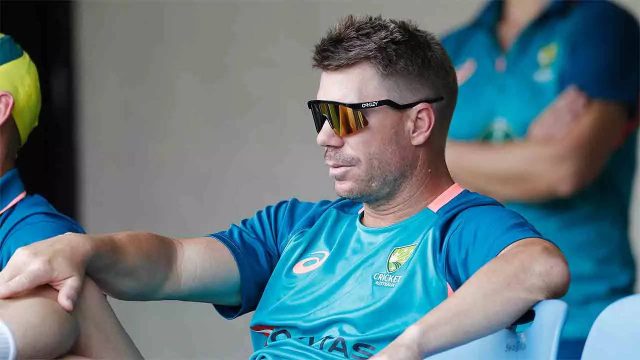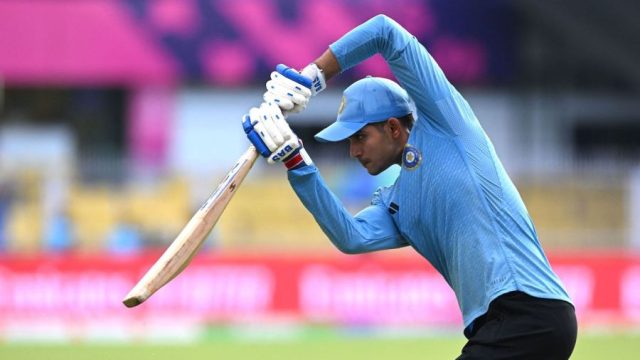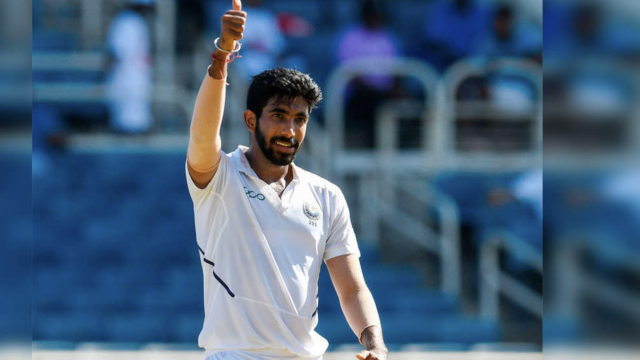How To Calculate Duckworth-Lewis Method In Cricket

Cricket is one of the most beloved sports in the world, and no match can be considered complete without a fair result. The Duckworth-Lewis (D/L) method is a system used to calculate a fair target score for a team when a match is interrupted due to rain or other elements.
It is based on the resources available to each team, taking into consideration the number of overs each side has faced. Learning to calculate the Duckworth-Lewis method can help you get more out of cricket matches and understand the strategy behind each team’s decisions.
Read on to learn more about calculating the Duckworth-Lewis method for cricket scoring and how it plays a vital role in cricket.
Components of the Duckworth-Lewis Method
The Duckworth-Lewis method is a formula that makes allowances for a number of factors to determine a fair score for a team to chase. These include the following:
• The resources available to each team – The number of overs bowled, the number of wickets lost and the amount of time lost due to interruptions like rain or bad light.
• The relative strengths of the two teams – The side batting second has the advantage of knowing the number of runs that the first team scored.
• The state of the match – For example, an innings that is interrupted midway and then resumed again with the same number of deliveries remaining may not be as evenly balanced as one where the interruption occurred at one end with an even number of deliveries remaining.
Determining the Resources Available
The resources available to each team form the basis for the D-L method. The first thing to do is add up the resources available for both teams. The batsmen from the first innings and the batsmen from the second innings are the resources, while the bowler and the fielders are the resources for the fielding side.
The first team to bat have five batsmen, nine bowlers and eleven fielders, while the second team to bat have five batsmen, eight bowlers and eleven fielders. To get the total number of resources available for the two teams, add up the batsmen, bowlers and fielders from both sides. The totals are fifteen batsmen, eighteen bowlers and twenty-two fielders.
Calculating the Resource Percentage
The next step is to calculate the resource percentage for each team. This is more complicated than it sounds and requires you to crunch a few numbers. To calculate the resource percentage for each team, do the following:
- Add up the total of batsmen, bowlers, and fielders from both teams.
- Then, divide the total of the first team by the combined total of resources from both teams.
- Similarly, divide the total of the second team by the combined total of resources from both teams.
So, if we take the example from the previous section, we have the following totals:
- Total batsmen from first team – 5 + 5 = 10.
- Total batsmen from second team – 5 + 5 = 10.
- Total bowlers from first team – 9 + 8 = 17.
- Total bowlers from second team – 8 + 8 = 16.
- Total fielders from first team – 11 + 11 = 22
- Total fielders from second team – 11 + 11 = 22.
- Combined total of resources from both teams – 15 + 18 + 22 = 57.
Now, let’s work out the resource percentage for each team.
- First team’s percentage – 10 / 57 = 19.3%.
- Second team’s percentage – 10 / 57 = 19.3%.
These are the average values you can expect when you are calculating the resource percentage. There are times when these values can be slightly higher or lower, but an average resource percentage is 19% for the team batting first and 19% for the team batting second. Resource percentage can help you determine the resources available for both teams when a match is interrupted.
Calculating the Par Score
The next step is to calculate the par score for each team. To do this, you need to take into account the resources available for each team.
The team batting first has a resource percentage of 19% and the team batting second has a resource percentage of 19%. Taking these percentages into account when calculating the par score, the first team has to score a total of 58.33 runs. Similarly, the second team has to score 95.33 runs to reach the par score.
Adjusting for Rain and Other Interruptions
By this point, you have the par score for each team. Now, all that’s left to do is adjust for interruptions like rain or bad light, and you will have the final target score.
Rain and bad light keep interrupting cricket matches all the time, and this has to be taken into account when calculating the target score. Let’s say that a match is interrupted twice: once after the first team scored 50 runs and once after they reached 100 runs. In this scenario, there are two different target scores. To find the total target score, take the resources from the first interruption and add them to the resources from the second interruption.
Calculating the Target Score
Say the first interruption occurred after the first team scored 50 runs. This would be a total of ten overs.
- First team’s resources (19%) – Five batsmen, nine bowlers, and eleven fielders.
- Second team’s resources (19%) – Five batsmen, eight bowlers, and eleven fielders.
- Resources available during the first interruption – 10 overs x 5 batsmen = 50 overs.
- Combined total of resources after first interruption – 24 + 50 = 74.
- Second interruption occurred after the first team scored 100 runs
- Combined total of resources after second interruption – 24 + 100 = 124.
- Combined total of resources after both interruptions – 74 + 124 = 198.
Applying the Target Score in a Match
Let’s say a match is interrupted twice, as described in the previous section. In this scenario, the first team is batting first and have scored 50 runs at the end of 10 overs. The second team is then sent out to bat, and they have to score 95 runs to win the match. The first team is then given another chance to bat, and they have to score 58 runs to win the match.
Just by taking into account the above example, you can easily understand how the Duckworth-Lewis method is applied in real-life scenarios.
Examples of the Duckworth-Lewis Method in Action
The best way to understand the D-L method is to look at a few examples. Let’s take a look at a couple of examples to understand how the D-L method works.
Example 1 – First team to bat has a resource percentage of 19% and the second team has a resource percentage of 19%. The first team has scored 50 runs after 10 overs and has a total of five batsmen. At this point, the second team is sent to bat and has a resource percentage of 19%. They have a total of five batsmen, eight bowlers and eleven fielders. Let’s say this match is interrupted twice by rain or bad light.
Example 2 – First team to bat has a resource percentage of 19% and the second team has a resource percentage of 19%. The first team has scored 100 runs after 20 overs and has a total of five batsmen. At this point, the second team is sent to bat and has a resource percentage of 19%. They have a total of five batsmen, eight bowlers and eleven fielders. Let’s say this match is interrupted twice by rain or bad light.
How To Calculate Duckworth-Lewis Method In Cricket – Conclusion
The Duckworth-Lewis method is a simple yet effective way of determining a fair result in a cricket match. It takes into account the resources available to each team and calculates a target score based on those factors. It also factors in rain and bad light to calculate a final target score. The D-L method can be applied in both Test cricket and limited-overs cricket, making it an important and useful system for scoring matches.
How To Calculate Duckworth-Lewis Method In Cricket – FAQs
What is the Duckworth-Lewis method?
The Duckworth-Lewis method is a mathematical formula used in the sport of cricket to calculate the target score for the team batting second in a limited-overs match that is interrupted by rain or other factors. The method is designed to ensure that the team that bats second has the same chance of winning as the team that bats first.
How is the target score calculated using the Duckworth-Lewis method?
The target score is calculated by taking into account the number of overs remaining in the match, the number of wickets that have fallen, and the current run rate of the team batting first. The method uses a complex mathematical formula to determine the required run rate for the team batting second, taking into account the resources (wickets and overs) that will be available to them.
How is the Duckworth-Lewis resource table calculated?
The resource table is used to calculate the target score for the team batting second. The table is based on the number of overs remaining in the match and the number of wickets that have fallen. The table is created by running simulations of limited-overs matches under different conditions (e.g., different numbers of overs and wickets) and determining the average run rate for the team batting second under those conditions.
How does the Duckworth-Lewis method take into account the different playing conditions?
The Duckworth-Lewis method takes into account the different playing conditions by using different resource tables for different types of matches (e.g., One Day Internationals, Twenty20s, etc.). The resource tables are created based on simulations of matches played under similar conditions to ensure that the target score calculated using the method is fair and accurate.
Are there any criticisms of the Duckworth-Lewis method?
There have been some criticisms of the Duckworth-Lewis method, mainly due to the complexity of the mathematical formula and the resource tables used to calculate the target score. Some critics argue that the method can be difficult to understand and apply, especially for non-experts. Others argue that the method may not always produce a fair result, especially in matches where one team has a significant lead over the other.
How does Duckworth Lewis method differ from other rain rules?
The Duckworth-Lewis method differs from other rain rules in that it takes into account the number of overs remaining in the match, the number of wickets that have fallen, and the current run rate of the team batting first, to calculate the target score for the team batting second. Other rain rules, such as the VJD method, only take into account the number of overs remaining in the match and the run rate at the time of the interruption. The Duckworth-Lewis method is widely accepted as a fair and accurate method for determining the target score in interrupted matches, while other rain rules have been criticized for not taking into account all the factors that can affect the outcome of a match.





